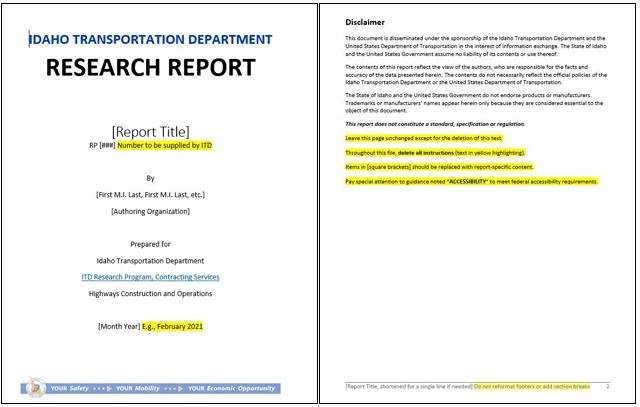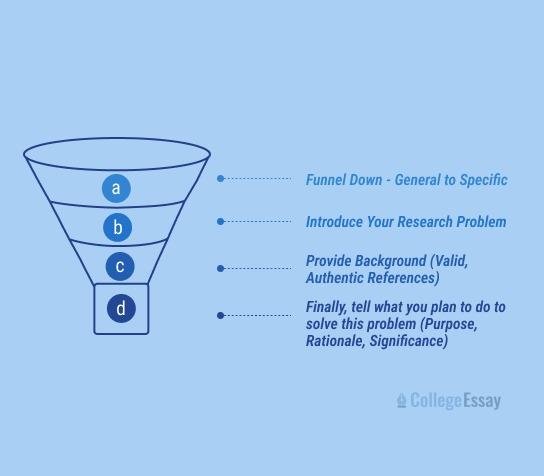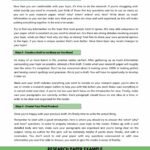research report introduction example

Introduction
In the realm of academic inquiry, a well-crafted research report serves as a bridge between the investigator’s meticulous examination of a subject and the broader world eager for knowledge. Among the various components of a research report, the introduction holds a pivotal role, setting the stage for what follows and inviting readers into the discourse. A compelling introduction not only outlines the research’s significance but also engages the audience with a clear statement of objectives, providing a roadmap for navigating the complexities of the study. Whether it’s a scientific exploration, an engineering analysis, or a psychological investigation, the introduction must succinctly convey the essence of the research, offer a glimpse into the literature that informs it, and present the methods employed to achieve its goals. This article explores the fundamental elements of an effective research report introduction, presenting examples that illustrate best practices for capturing attention while imparting critical context. Remember, a strong beginning not only informs but also inspires curiosity, encouraging readers to delve deeper into the findings and implications of the research.
Crafting a Compelling Overview for Research Reports
When crafting an overview for your research report, it’s crucial to encapsulate the essence of your study in a concise and engaging manner. A compelling overview should provide a snapshot of the report and highlight the significance of your research. Focus on answering these essential questions:
- What issue does the research address?
- What are the primary goals of the research?
- Why is this research important?
- What methods were employed to conduct the study?
An effective overview not only summarizes the key points but also engages the reader by presenting the information clearly and logically. Consider utilizing a structured approach to articulate your findings. This can include a brief summary table that outlines the research components, allowing readers to quickly grasp the core elements. Here is an example:
| Research Component | Description |
|---|---|
| Research Problem | Analysis of the impact of social media on mental health. |
| Objectives | To understand correlation between social media usage and anxiety levels. |
| Methodology | Survey of 500 participants aged 18-30. |
| Findings | Increased usage linked to higher anxiety scores. |

Essential Elements of an Engaging Introduction
An engaging introduction serves as the gateway to your research report, captivating the reader’s interest while laying a solid basis for the content that follows. To accomplish this, consider incorporating several key components that enhance clarity and curiosity. Start with a hook that draws the reader in—this could be a surprising fact, a thought-provoking question, or a brief anecdote related to your research topic. Following the hook, provide context by outlining the background of your study, which sets the stage for why your research is vital and relevant. This provides readers with a frame of reference, allowing them to understand the significance of your work.
Furthermore, an effective introduction should include a clear thesis statement that succinctly expresses the main argument or purpose of your research. This statement should act as a roadmap for your readers, guiding them through the upcoming sections of your report. Additionally, it’s crucial to present the scope of your research, indicating what aspects you will cover and what will be excluded. Here’s a simple table to summarize these elements:
| Element | Description |
|---|---|
| Hook | A captivating opening to grab attention. |
| Context | Background that frames the research. |
| Thesis Statement | A clear assertion of the main argument. |
| Scope | Indication of what will be covered. |

Strategies for Captivating Your Audience from the Start
Engaging your audience from the very beginning requires a blend of strategy, creativity, and insight into their preferences. To create an immediate impact, start with a compelling hook that captures attention. Use a thought-provoking question or an intriguing fact that relates to your topic. This establishes relevance and prompts readers to think critically. Consider employing visual elements like compelling images or infographics that complement your message, as they can help convey information quickly and keep your audience engaged. Here are some effective methods to engage early:
- Use anecdotes: Personal stories that relate to your research can create a connection.
- Incorporate statistics: Presenting surprising data effectively underscores the significance of your findings.
- Set the scene: Describe a scenario that vividly illustrates the research topic’s importance.
Additionally, it’s crucial to speak directly to your audience by addressing their potential concerns or interests. Craft your introduction in a way that resonates with them, using clear and concise language that avoids jargon. This not only makes your content more accessible but also encourages inclusivity among readers. Incorporate a call-to-action that entices them to continue reading by suggesting they will gain valuable insights or practical knowledge. A well-structured introduction serves as a roadmap, guiding your audience through what they can expect, reinforcing their decision to invest time in your content.
- Pose a challenge: Ask readers how they would approach a specific problem related to your research.
- Tease upcoming insights: Briefly mention what they will learn by the end of your report.
- Create urgency: Highlight why the topic is relevant at this moment.

Common Pitfalls to Avoid in Research Report Introductions
When crafting the introduction of your research report, steering clear of common pitfalls can significantly enhance its effectiveness. One frequent error is the failure to establish a clear context for the study. Failing to provide background information can leave readers bewildered about the significance of your research question. It’s essential to include relevant literature and statistics that frame your work within the broader field. Additionally, don’t forget to define key terms; ambiguity can detract from your credibility and confuse your audience.
Another recurring misstep is being overly broad or vague in the purpose statement. A crystal-clear articulation of your research objectives is crucial. Avoid statements that are not specific enough; instead, present a focused thesis that highlights the uniqueness and relevance of your research. Furthermore, neglecting to outline the research methodology can leave readers questioning the reliability of your findings. Consider summarizing your approach in a simple table that succinctly captures the essential elements:
| Research Method | Description |
|---|---|
| Quantitative | Data collected through surveys and experiments. |
| Qualitative | Interviews and focus groups to gather in-depth insights. |
| Mixed Methods | Combines quantitative and qualitative approaches for a comprehensive view. |
Closing Remarks
crafting a compelling introduction for a research report is an essential skill that sets the tone for the entire study. By weaving together the context, significance, and objectives of your research, you not only engage your readers but also provide them with a clear roadmap of what to expect. Remember, the introduction is your opportunity to captivate and inform, inviting your audience into the intricate world of your findings. As you continue on your academic journey, keep these principles in mind, allowing each introduction you write to reflect your unique voice and the importance of your work. With practice and intention, you’ll transform your introductions into powerful gateways that draw readers into the heart of your research. Happy writing!




